The two cartridges we are going to look at in this article, the .357 vs .44 Magnum, are steeped in American culture and tradition. They both also serve some of the same shooting niches including hunting and self-defense.
In this article, we will take a look at these high velocity and hard-hitting handgun cartridges by comparing certain ballistic and other performance categories. What we hope to do is outline the similarities and differences between the two to better understand what situations and applications both cartridges will excel.
We will take a brief look at the history of the two cartridges, compare performance specs using several rounds of each cartridge, and then wrap the article up discussing how their performance translates into using them in certain situations.
A Brief History
.357 Magnum
The .357 Mag’s origins begin in the early 1930’s where the police force was in desperate need of a better terminal performing handgun load. From the .38 special, modifications began to be made by Phil Sharpe, Elmer Keith, and eventually the guys at Smith & Wesson. What came from these modifications is the round that is still in use today, the .357 Mag.
The .357 Mag was a handgun cartridge that provided unrivaled velocity and terminal ballistic performance at the time. Hundreds of different firearms have been produced since the cartridge’s introduction to the shooting world that vary in length and weight. The .357 Magnum is also used in carbines that are better served for hunting purposes.
The .357 Magnum today is a favorite of handgun connoisseurs with its rich history, home defense with its excellent terminal ballistics, and hunters as well. The variety of .357 Mag rounds allows the shooter to match his ammunition well with the task at hand. The most common .357 Mag bullet weights range anywhere from 120-160gr and come in designs that range from deep penetration to rapid expansion and fragmentation.
.44 Magnum
The .44 Remington Magnum, commonly known as the .44 Mag, was introduced in 1956. Its development stemmed from the .44 Special, which Elmer Keith modified to increase velocity and energy. Smith & Wesson and Remington eventually commercialized these enhanced rounds and designed firearms to chamber them.
Since its introduction, the .44 Mag has been a staple in American handguns and culture. Although newer cartridges have emerged, the .44 Mag continues to deliver high velocities and significant energy from handguns.
This makes it an excellent choice for a powerful, deep-penetrating handgun cartridge, a feature that remains relevant today.
Similar to the .357 Magnum, the .44 Mag can be used in carbines, making it a viable option for hunting with less severe recoil. It accommodates much heavier bullets compared to the .357 Mag, with weights ranging from 180 to 300 grains. While lighter and heavier bullets are available, they are less common.
Specs
| .357 S&W Mag | .44 Remington Mag | |
|---|---|---|
| Parent Case | .38 Special | .44 S&W Special |
| Bullet Diameter | .357” | .429” |
| Neck Diameter | .379” | .457” |
| Base Diameter | .379” | .457” |
| Case Length | 1.29” | 1.285” |
| Overall Length | 1.59” | 1.61” |
| Case Capacity | 26.2gr | 37.9gr |
| Max Pressure | 35,000psi | 36,000psi |
The .357 Magnum is notably smaller in diameter compared to the .44 Magnum. Although their cases and overall lengths are similar, the .44 Magnum is significantly wider and more voluminous, allowing it to contain more powder and endure greater pressure when ignited. This difference in design leads to distinct variations in ballistic and terminal performance between the two cartridges, which we will explore in detail shortly. The larger neck diameter of the .44 Magnum also means it can accommodate much heavier bullets than the .357 Magnum, as detailed in the list of various rounds for each cartridge below.
For a comprehensive comparison of ballistic and performance characteristics, we have selected five factory rounds for each cartridge, covering a range of bullet weights and designs. The rounds for each cartridge are listed below.
 .357 Mag Federal Personal Defense Jacketed Hollow Point 125gr
.357 Mag Federal Personal Defense Jacketed Hollow Point 125gr .357 Mag Winchester Super-X 158gr
.357 Mag Winchester Super-X 158gr .357 Mag Hornady FTX Critical Defense 125gr
.357 Mag Hornady FTX Critical Defense 125gr .357 Mag Federal Hydra-Shok Low Recoil 130gr
.357 Mag Federal Hydra-Shok Low Recoil 130gr .357 Mag Hornady American Gunner XTP JHP 125gr
.357 Mag Hornady American Gunner XTP JHP 125gr
 .44 Mag Federal Hydra-Shok Low Recoil 240gr
.44 Mag Federal Hydra-Shok Low Recoil 240gr .44 Mag Federal Vital-Shok CastCore 300gr
.44 Mag Federal Vital-Shok CastCore 300gr .44 Mag Winchester Super-X 240gr
.44 Mag Winchester Super-X 240gr .44 Mag Hornady XTP 200gr
.44 Mag Hornady XTP 200gr .44 Mag Buffalo Bore Lead Long Flat Nose 305gr
.44 Mag Buffalo Bore Lead Long Flat Nose 305gr
The data that we are using for our ammo comparisons comes from ballistic calculators as well as from the manufacturer of each round. Although these figures are computer-generated and should provide reliable comparisons, they are not absolute and can vary slightly when fired from your handgun. Despite potential minor differences in actual performance, the relative differences between rounds of each cartridge should remain consistent.
Recoil
Recoil is a crucial factor when selecting a handgun for personal defense, as you need to manage quick successive shots while retaining accuracy. Both the .357 Mag and .44 Mag are recognized for their substantial power and recoil. The degree of recoil is influenced by several factors including barrel length, grip style, gun weight, and the ammunition used.
Before we dive into the numbers, it’s important to clarify how we derived them. We assessed the energy produced from firing each round using a ballistics calculator, considering the bullet weight, muzzle velocity, powder charge (based on Nosler load data), and firearm weight. For consistency, we kept the firearm weight and powder charge constant across rounds within each cartridge, and used conservative powder loads typical of factory ammunition.
Because of this method, the comparisons should be valid, but as we mentioned earlier, the actual numbers could change depending on the firearm you are using. The “felt recoil” will vary even more so depending on the weight and the barrel length. Barrel length is especially important with these two cartridges where barrel length can vary pretty widely from gun to gun. A snub nose for either of these cartridges is going to have significantly more kick than a handgun with a 4” barrel.
This approach ensures valid comparisons, but actual numbers may vary depending on your specific firearm. "Felt recoil" can fluctuate more, particularly with differing barrel lengths. A snub-nosed revolver will exhibit notably more kick than one with a 4" barrel. Both cartridges are effective for stopping threats and hunting, but managing their recoil is essential. Let’s examine the recoil energy generated by these cartridges.
What stands out is the significant increase in recoil energy with the .44 Mag compared to the .357 Mag. In several cases, the .44 Mag exhibits more than double the recoil energy of the .357 Mag. Even the .357 Mag round with the least recoil is still less than the most intense .44 Mag rounds we reviewed. While we selected several powerful .44 Mag options for comparison, it's worth noting that there are less severe rounds available. However, the overall trend is logical: larger diameter and heavier bullets generate more recoil. The added power of the .44 Mag comes with the trade-off of increased recoil.
These findings are important and will be explored further in the application section of the article.
Ballistics
Even though handgun rounds are typically used for targets within 50 yards, their ballistic performance remains crucial when comparing cartridges. We'll examine the velocity, ballistic coefficients, and trajectory of the .357 Mag and .44 Mag to better categorize these cartridges for specific shooting scenarios by the end of the article. While ballistic coefficients and long-range trajectory might seem less relevant for handgun users, they become important for those considering the use of these cartridges in carbines for larger game, where these factors can play a significant role.
Velocity
The impact of velocity on bullet effectiveness, especially for home defense, is often debated and can sometimes spark heated discussions. What's clear is that velocity, alongside bullet weight and design, influences terminal performance, penetration, and expansion. If you can handle the recoil, an additional 100 fps in velocity is generally beneficial.
However, excessive velocity might lead to overpenetration, though this usually requires very high speeds and non-expanding or non-fragmenting bullets.
Let’s take a look at the velocities (ft/s) of our ten rounds for comparison and see if we can draw any conclusions.
While our data covers up to 100 yards, most handgun shots are within 50 yards. The velocity of each round varies more by the specific load than by the cartridge itself. Heavier .44 Mag bullets generally have lower velocities compared to lighter ones, which is expected given the recoil. However, some .44 Mag rounds can match or even exceed the velocity of .357 Mag rounds at 50 yards, though they come with significant recoil.
Averaging the velocities, the .357 Mag generally maintains higher speeds up to 100 yards, but the gap narrows beyond 50 yards. All tested rounds achieve muzzle velocities above 1,000 fps, with impact velocities ranging from 1,150 to 1,600 fps at 50 yards.
These speeds, combined with appropriate bullet designs, are sufficient for effective terminal expansion. Keep in mind that these figures can vary based on the barrel length of your handgun, with our comparisons based on the manufacturer’s specified barrel lengths.
Ballistic Coefficient
The ballistic coefficient (BC) measures how well a bullet maintains its speed and resists wind drift, based on various bullet dimensions. A higher BC indicates a more streamlined bullet that experiences less air resistance and wind drift, which generally makes it easier to aim accurately at longer distances.
Although BC is often less relevant for handgun users, it becomes more important when considering carbines, where longer shots are possible. Therefore, we examined how the .357 and .44 Mag compare in terms of BC.
We have gathered the BC values from manufacturers for most rounds, but the BC for the Buffalo Bore .44 Mag round was not available and is excluded from this comparison.
From this data, we observe that there is not a significant or noticeable difference in ballistic coefficients when comparing cartridge to cartridge. If we look at round to round we see that no matter what you go through these rounds do not have very good BCs. It is expected given the design of handgun rounds. The performance largely hinges on the bullet design, and defense-oriented handgun rounds often lack the aerodynamic shape required to maintain trajectory over longer distances.
At the typical ranges where these rounds are used, the low BC is inconsequential and does not affect accuracy. If extended range is needed, there are specialized rounds for carbines that offer much superior ballistic coefficients.
Trajectory
Trajectory is typically discussed in greater detail for rifle cartridges, but it’s also relevant for handgun cartridges like the .357 Mag and .44 Mag. While handgun shots are usually taken within 75 yards, these rounds are popular for hunting, where you might need to shoot beyond 50 yards.
We’ve included a graph to depict the trajectory's flatness over a range of 500 yards.
Obviously, we are looking at handgun cartridges, and shots at 500 yards are not feasible. This is obvious when looking at 400 inches of bullet drop at these ranges. Now, most factory loads for a handgun can be used in a carbine chambered for the same cartridge, but there are some rounds designed specifically for use in a carbine and are better suited for long-range shooting.
We will focus more on typical ranges handguns are used for shortly. You can still see the trajectories of these two similar rounds are similar and both show negligible differences out to 100 yards. You might be looking at 100 or 150 yards with a carbine, but that is the only scenario where we see this occurring.
Let’s zoom in on this range and see if we can tease apart any differences in bullet drop (inches) between these two heavy handgun cartridges.
We observe a slight difference between the .357 Mag and .44 Mag cartridges, but variability also exists among rounds of the same type. These differences become more notable at 75 and 100 yards, with the heavier .44 Mag exhibiting greater bullet drop than the .357 Mag, though the difference is only 2-3 inches. The Hornady 125gr XTP JHP round, in particular, shows a significant reduction in bullet drop compared to other rounds within the same cartridge, with a notable 5-6 inches less drop than the .44 Mag. Both cartridges exhibit minimal trajectory loss out to 50 yards, allowing for straightforward aiming and firing with minimal adjustment, which is advantageous for both defensive and even hunting purposes.
Stopping Power
For home defense cartridges, stopping power is a primary concern for many buyers. Stopping power involves several factors, including bullet penetration, expansion, and fragmentation. As noted earlier, velocity also influences a bullet's performance upon impact. Additionally, the energy transferred from the bullet to the target creates significant trauma to nerves, tissue, and organs. In this section, we will examine both the kinetic energy of the bullet and its penetration by analyzing the sectional density of each of the ten selected rounds.
Energy
Kinetic energy is a crucial aspect of stopping power, though not the only factor. Upon impact, this energy is transferred and can cause significant damage to surrounding tissue. Home defense handgun owners often seek maximum energy transfer, which depends on achieving the right velocity and bullet expansion upon impact.
While bullet design plays a larger role in these factors than cartridge type, the force carried by the bullet helps compare different cartridges more effectively. Therefore, we will assess the stopping power (ft.lb) of each of the eight rounds to identify any trends between cartridges.
Examining the graph, it's clear that .44 Mag rounds deliver significantly more force than .357 Mag rounds. Nearly all of the .44 Mag selections exceed 600 ft.lb of force at 100 yards, indicating substantial stopping power and suggesting their suitability for various applications. While most .44 Mag rounds carry more energy than their .357 Mag counterparts, the 158gr Winchester Super-X .357 Mag round exceeds three of the .44 Mag rounds in energy due to its higher grain weight and velocity. Generally, .44 Mag rounds are expected to deliver more force and cause greater damage.
However, .357 Mag rounds are still potent, with energies around 500 ft.lb at 50 yards, sufficient for effective penetration and damage. The heavier 158gr .357 Mag round shows performance similar to some .44 Mag rounds, aligning with the principle that force is a product of mass and acceleration.
It's important to remember that stopping power involves more than just ft.lb force. Despite the higher energy of many .44 Mag rounds, .357 Mag rounds are still capable of stopping an intruder effectively.
Next, let's consider penetration as another crucial factor in stopping power.
Penetration
The most effective way to gauge penetration without using ballistic gel is by examining the sectional density of the bullets for each cartridge. While ballistic gel provides useful information, it may not accurately represent scenarios involving heavy denim or large animals. Assessing sectional density removes variables such as bullet design, offering a clearer comparison of the penetration potential between cartridges.
Sectional density is calculated based on a bullet’s weight and diameter. A higher sectional density means that more force is concentrated on a smaller area, resulting in better penetration. However, it's important to note that bullet design, such as rapid expansion or fragmentation, can impact penetration depth. For simplicity, we are not considering these factors in our comparison, but they are worth noting.
Let’s examine the sectional densities of our eight selected rounds to understand how they compare.
The sectional density data indicates that .44 Mag rounds generally offer significantly better penetration compared to .357 Mag rounds. However, this doesn't mean that .357 Mag rounds have poor penetration for a handgun cartridge. Despite the smaller diameter of .357 Mag rounds, the greater weight of the .44 Mag rounds enhances their sectional density. That said, not all .44 Mag rounds are vastly superior to .357 Mag rounds. For instance, the 200gr .44 Mag round has a sectional density similar to that of the larger .357 Mag rounds used in our comparison. While the .44 Mag rounds have superior velocity, energy, and sectional density, the .357 Mag still provides substantial stopping power, though slightly less than the .44 Mag.
Accuracy
For handgun cartridges, particularly in home defense scenarios, accuracy is crucial but hard to quantify due to the influence of both the firearm and the shooter. At close ranges, such as those typically encountered, the minimal bullet drop observed up to 50 yards means that major adjustments to shot placement are unnecessary. However, at distances beyond 50 yards, the .357 Mag rounds may have a slight advantage with a few inches less bullet drop on average compared to the .44 Mag rounds.
Where there is going to be a major difference between these two cartridges when discussing accuracy has to do with recoil. The .44 Mag has a much more pronounced and severe recoil than the .357 Mag. If you're not well practiced with handling the heavy recoil, they can influence your shot, and they will influence your ability to make quick follow up shots that are accurate, especially when you are in a situation where you need to protect yourself, and the adrenaline is pumping.
Regarding ballistics and when used at normal handgun distances, there is not going to be much of a difference between cartridges. Between rounds, perhaps, but we don't feel comfortable saying one cartridge is more accurate than the other. In the end, we think accuracy is going to depend almost solely on the one doing the shooting and how much experience and confidence they have with their firearm and the cartridge.
Price and Availability
Price is an important consideration when choosing a firearm, especially if you're undecided about your needs. Factory-loaded .44 Mag ammunition generally costs significantly more than .357 Mag rounds. The same applies to brass for handloading. While there are rounds available that are cheaper and on the high end of the price spectrum for the 44 Mag vs 357 Mag, averages lean towards the .44 Mag is a more expensive cartridge.
| Ammunition | Price |
|---|---|
| .357 Mag Federal Personal Defense Jacketed Hollow Point 125gr | $19.29 (20 Rounds) |
| .357 Mag Winchester Super-X 158gr | $25.00 (20 Rounds) |
| .357 Mag Hornady FTX Critical Defense 125gr | $32.60 (20 Rounds) |
| .357 Mag Federal Hydra-Shok Low Recoil 130gr | $22.49 (20 Rounds) |
| .357 Mag Hornady American Gunner XTP JHP 125gr | $16.49 (25 Rounds) |
| .44 Mag Federal Hydra-Shok Low Recoil 240gr | $31.99 (20 Rounds) |
| .44 Mag Federal Vital-Shok CastCore 300gr | $40.00 (20 Rounds) |
| .44 Mag Winchester Super-X 240gr | $26.00 (20 Rounds) |
| .44 Mag Hornady XTP 200gr | $27.81 (20 Rounds) |
| .44 Mag Buffalo Bore Lead Flat Nose 305gr | $35.49 (20 Rounds) |
The availability of these rounds varies as well. While both cartridges are generally stocked in major retail stores, you will typically find a broader selection for the .357 Mag. This is due to the higher number of .357 chambered handguns and carbines in use compared to .44 Mag. Although .44 Mag ammunition is available, the variety of options is usually more limited. The same holds true for handloading components. Although the internet has made it easier to access these items, the broader selection for .357 Mag remains accurate.
Applications
Having compared the ballistic and performance aspects, let’s explore the applications of the .357 Mag versus the .44 Mag.
For trail use, the .44 Mag offers greater security due to its superior penetration and stopping power against large predators like bears. Although some .357 Mag rounds can serve a similar role, the .44 Mag generally provides better performance. Its heavier bullets result in deeper penetration and higher force at longer ranges, making it a strong choice for hunting larger game or protection in the wilderness.
In a carbine, the .44 Mag can handle even the largest North American game and other large game worldwide. While the .357 Mag is also effective for hunting, its penetration may limit its use against larger game compared to the .44 Mag.
For home defense, both cartridges provide ample stopping power. They both offer options with rapid expansion for effective wound creation. However, the .44 Mag’s heavy recoil can be a drawback, making it less manageable for quick, accurate follow-up shots. The .357 Mag, with its relatively lower recoil and suitable defensive ammunition, is often favored for home defense, though the .44 Mag remains a viable option in skilled hands.
Regarding over-penetration, the .44 Mag has the potential for greater penetration due to its sectional density, but bullet design plays a crucial role. Defensive rounds are designed to minimize over-penetration, so this should be less of a concern with either cartridge.
Finally, for concealed carry, both cartridges require larger firearms to manage recoil effectively, which may affect comfort and concealability. The .357 Mag has more options for concealed carry, though smaller guns can increase recoil. Overall, the .357 Mag is typically preferred for concealed carry due to its balance of recoil and performance.
Best Rounds
Before concluding this article, let's review the ten rounds we've examined and highlight our top picks for specific purposes: hunting, defense, and range use. These recommendations are based on our preferences, but you might find other options better suited to your needs in each category. Ultimately, what's most important is that you use ammunition safely and have confidence in its effectiveness. We respect your choices and encourage you to select what works best for you.
Top Hunting/Game Defense
For .357 Mag, our top pick for hunting and game defense is the Winchester Super-X 158gr. Despite its trajectory dropping off beyond 75 yards, it has a flat trajectory up to that point. This round stands out due to its high energy and sectional density, providing excellent stopping power, with the soft point offering significant expansion and wound creation. Its trajectory limits make it better suited for game defense rather than long-range hunting.
For hunting specifically, we recommend the Buffalo Bore Lead Flat Nose 305gr. This round is designed for deep penetration and expansion, ideal for quickly taking down large game. Although it has substantial recoil, its impressive stopping power and trajectory make it a strong choice for both hunting and game defense.
Top Defense
For the .357 Mag, our top choice for defense is the Hornady FTX Critical Defense 125gr round. Its standout feature, not covered in the article, is its propellant. The FTX hollow point reliably expands even through heavy clothing, and it utilizes a low flash propellant, which is beneficial in low-light, close-quarter situations. With one of the highest bullet energies among .357 Mag rounds and minimal additional recoil, this round offers exceptional reliability for home defense.
For the .44 Mag, we recommend the Federal Hydra-Shok Low Recoil 240gr round. Its low recoil is particularly advantageous for defensive situations, making it easier to handle despite its substantial stopping power. With over 600 ft.lb of force and a velocity exceeding 1,000 ft/sec at 50 yards, it provides more than enough power for effective terminal effects while maintaining manageable recoil.
Top Range Round
For range practice with the .357 Mag, we recommend the Federal Personal Defense Jacketed Hollow Point 125gr. This round is relatively affordable and offers reliable performance without breaking the bank. Its hollow point design makes it versatile for both practice and defensive use, and its manageable recoil helps prevent shooter fatigue, allowing for more effective practice sessions.
For the .44 Mag, we suggest the Federal Hydra-Shok Low Recoil 240gr rounds. While not the cheapest option available, they offer good value for their quality. These rounds provide a balance of manageable recoil and reliable performance, making them suitable for range practice while maintaining a reasonable cost.
Special Offer: Join our private community and get exclusive gun deals, handpicked gear recommendations and updates on law changes, every day!
Join our private community
Conclusion
We trust that you now see both the .357 Mag and .44 Mag as highly effective rounds for both hunting and self-defense. Each cartridge type has its own advantages and disadvantages, excelling in different shooting scenarios.
When utilized correctly and in suitable conditions, both the .44 Mag and .357 Mag can offer a rewarding shooting experience. While opinions may vary on which is superior, our comparison demonstrates that both cartridges have enduring value in the shooting community.






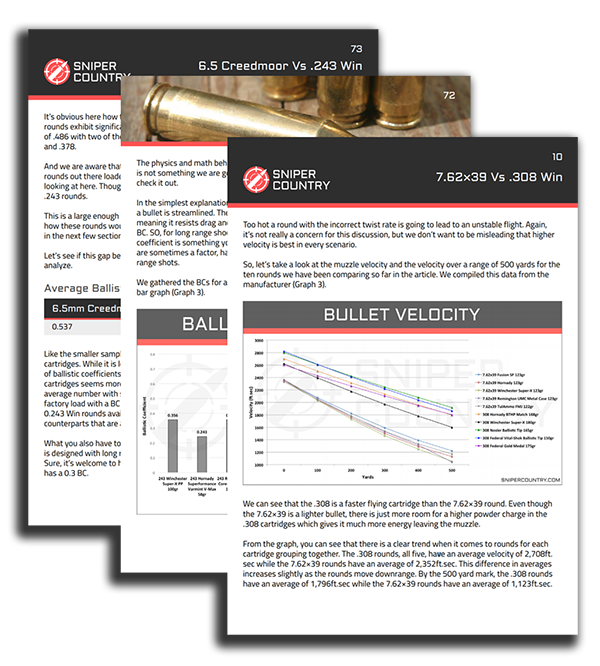













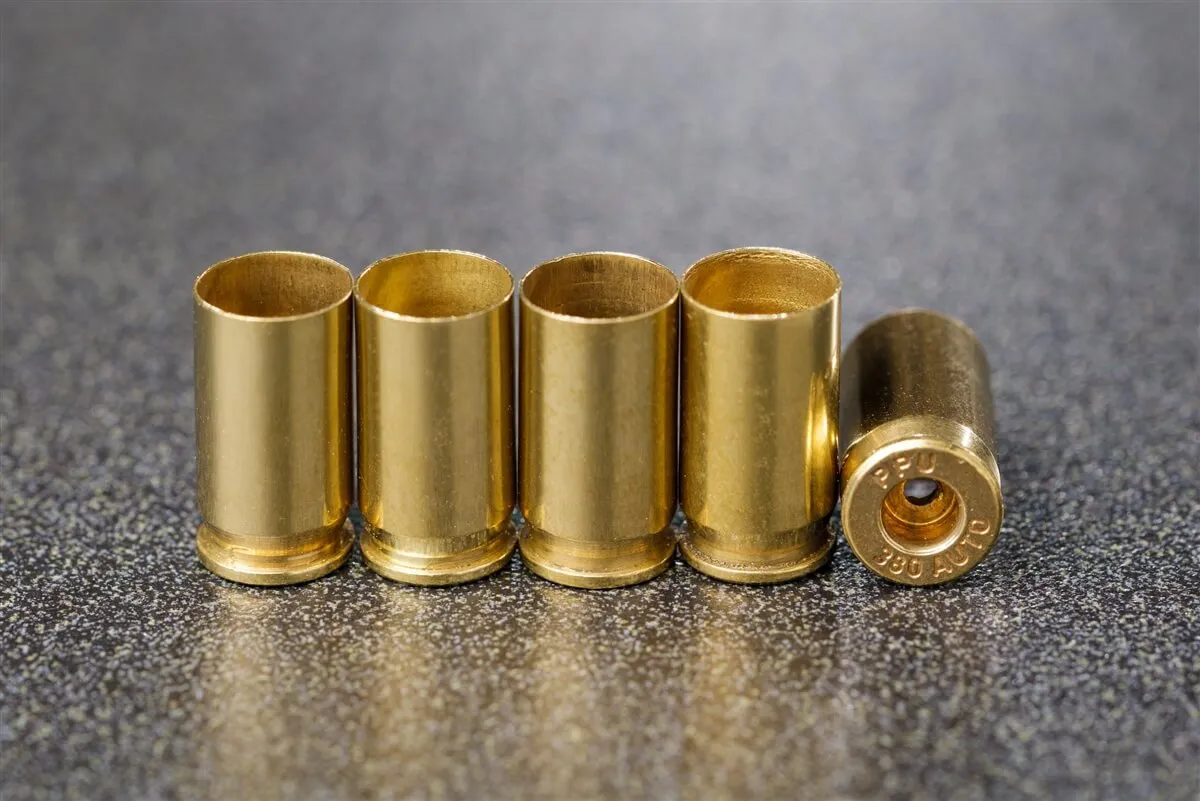
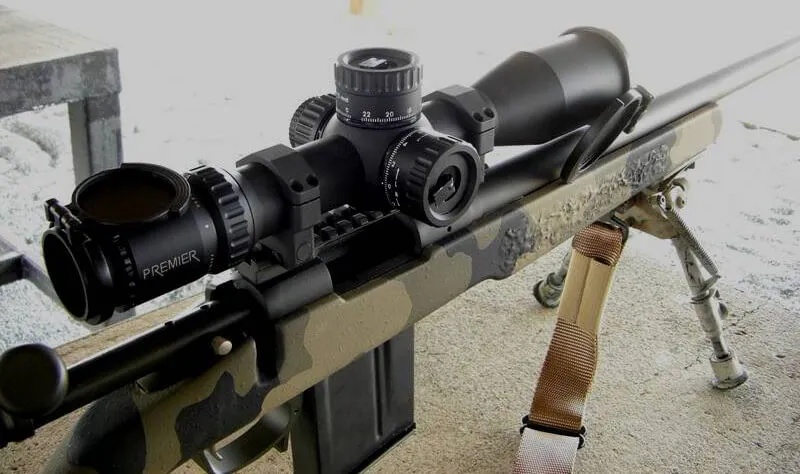
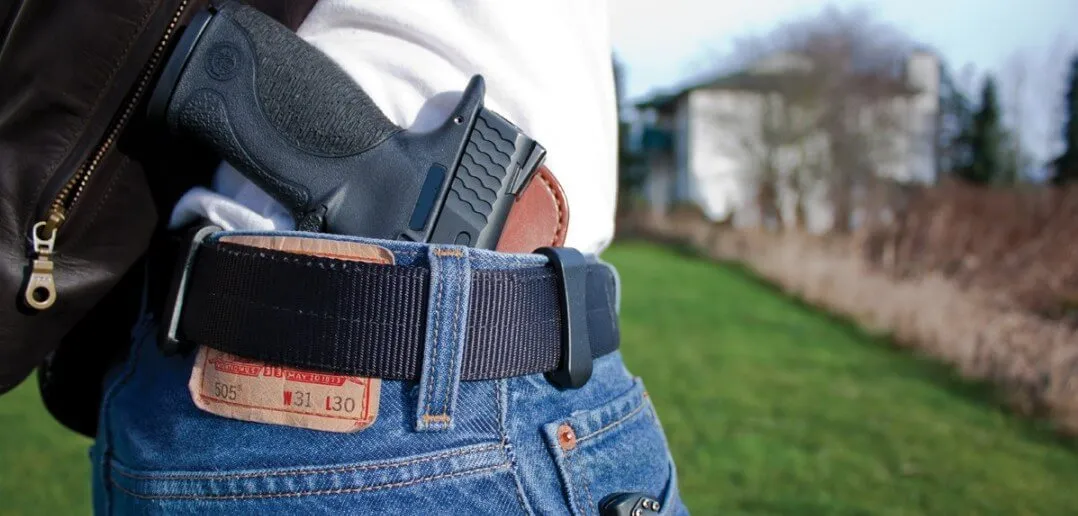
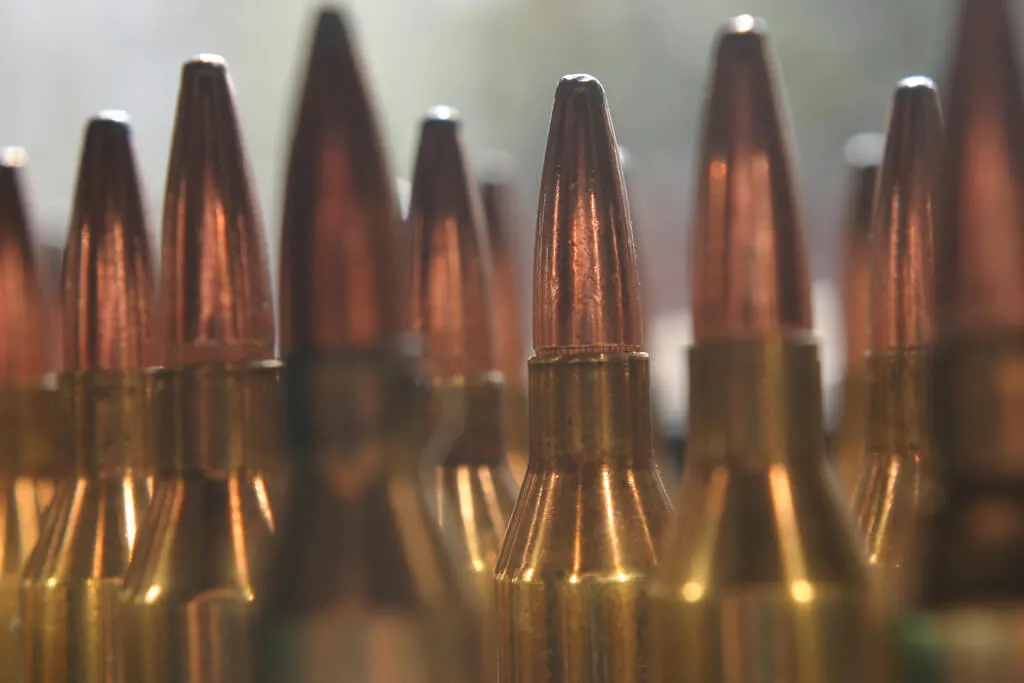
4 Responses
Never had nor shot a 357 mag; I now have a Ruger single six with a 4.5 in. barrel; have had several 44 mags my favorite is Ruger Vagaro w 7.5 in. barrel also have Henry 44 mag rifle . Now that the weather has changed will be trying out the 357 at the range. Great article enjoyed the ballistic info comparisons and looks like spot on top pick info GOOD job.
JWH
Vet and Patriot
Very well written document! I especially liked the human factor considerations for home defence like flash and recoil and the effectiveness of each as a trail gun. Thanks for putting this article together it answered a lot of questions. Another addition to this article would be to mention the potential training rounds for both calibers, .38 special and .44 special. Thanks Huston.
Anyone that thinks the 357 mag is even close to the 44 mag is a fool. Less than half on all measures.
My sm 44 mag with 8 3/8″ barrel is a beast. Heavy, not a walk around gun. But goes through everything.
Scares everyone who shoots it.
Sm 357 mag 7″. Love it, baby brother to the 44 but more fun to shoot . Can shoot 38s. Very accurate and much lighter to pack around during deer season. When not carrying a rifle.